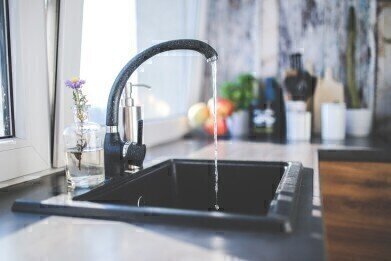Water/Wastewater
How Clean is Your Tap Water?
Jan 06 2015
Turning the tap on to fill the kettle for a cup of tea is an action carried out millions of times every day. We don’t think about drinking the water from our taps, and always assume that it is safe to consume.
But there are many processes that have to take place between the water being extracted from a river and taking a refreshing mouthful of crystal clear water from a glass. The water will have been through chemical treatments, filtration systems and a myriad other treatments before you get to drink the clean water. But who decides how clean our water needs to be?
Regulation of Drinking Water
The first water treatment on a large scale was carried out in the early nineteenth century when Robert Thom devised a filtration method for the water supply of Paisley, Scotland. The slow filtration method was so successful that it was soon used in many other cities around the UK — variations on Thom’s ideas are still in use today. With the acknowledgement that dirty water was contributing to the spread of disease and illness, it was recognised that the supply of clean water was essential to preserve the health of people, especially those living in cities. This lead to water regulations making water filtration requisite for towns and cities in Britain.
Nowadays, having a clean water supply is recognised by most people in the western world as a basic right in keeping people healthy. The World Health Organisation, in the Guidelines for drinking-water quality, state that “Water is essential to sustain life, and a satisfactory (adequate, safe and accessible) supply must be available to all. Improving access to safe drinking-water can result in tangible benefits to health. Every effort should be made to achieve drinking-water that is as safe as practicable.”
The regulation of drinking water quality is carried out by individual governments. In the UK the legal requirements are set out in the legislation “The Water Supply (Water Quality) Regulations 2000”. The UK regulations are drawn up using WHO guidelines and the Drinking Water Directive (98/83/EC) from the European Commission. In the USA drinking water quality is covered by the “Safe Drinking Water Act”. Although there are many different regulations in use around the world, they all aim to provide the same thing — safe, clean drinking water. But what are they protecting us from besides obviously dirty water?
Keeping the Bugs Out
The simple answer is everything. The regulations require the water supply companies to supply clean water free from contaminants of any kind (or to be below levels considered hazardous to health). Bacteria, salts and metals are the common contaminants that have to be measured and removed before the water reaches the consumer. In the UK it is the Drinking Water Inspectorate that is responsible for testing the supply from the various companies and enforcing the regulations.
Grab a glass of clean water and read about the testing of water in this article: New Technologies for Drinking Water Protection.
Digital Edition
IET 34.2 March 2024
April 2024
Gas Detection - Biogas batch fermentation system for laboratory use with automatic gas analysis in real time Water/Wastewater - Upcycling sensors for sustainable nature management - Prist...
View all digital editions
Events
Apr 30 2024 Melbourne, Australia
Apr 30 2024 Birmingham, UK
May 03 2024 Seoul, South Korea
May 05 2024 Seville, Spain
May 06 2024 Minneapolis, MN, USA


















